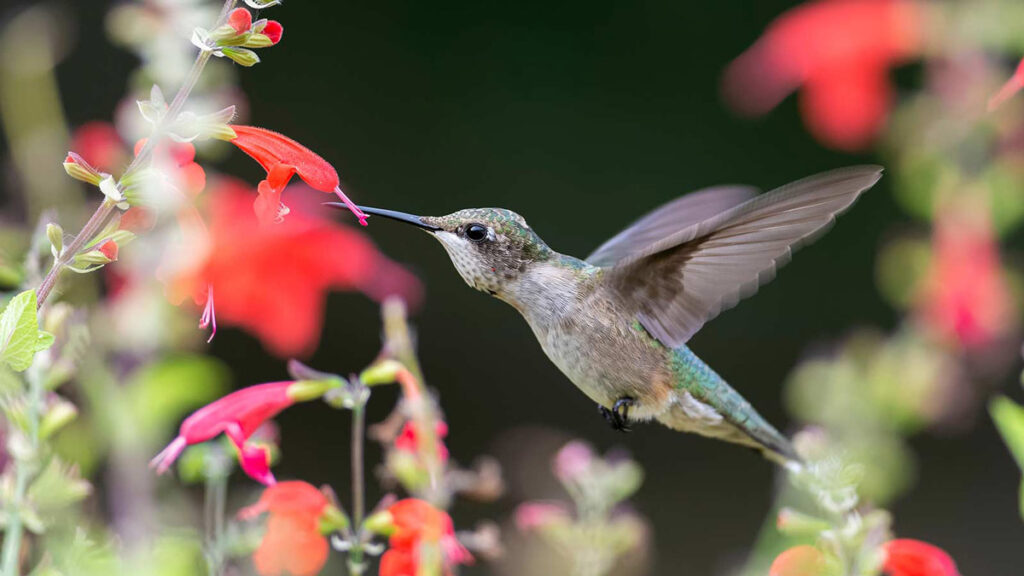
If it weren’t for pollinators, the agricultural industry would collapse as we know it. Eighty percent of the world’s food and plant products require pollination, making agricultural crop pollination worth over $3 trillion dollars globally.
Pollinating insects, birds, and mammals are critical for crop production, with over 150 crops in the US alone dependent on these creatures. Without them, humans, animals, and all other living things on the planet would go extinct. Here, we’ll discuss several important species that are actively working on your farm to pollinate your crops and ensure the world’s food security.
Bees
Bees are the most active pollinators, with over 4,000 species of native bees in the United States pollinating crops around the country. With high energy levels and large communities to sustain, bees spend a lot of their day collecting nectar and transporting pollen from flower to flower.
Honeybees are one of the hardest working bee species, with hairy bodies that help to gather pollen from a variety of different sized plants. Since large amounts of pollen and nectar need to be stored to fortify their offspring, honeybees forage regularly, in vast numbers, from nearly all crops that provide these nutrients.
Butterflies
Though less efficient than bees, butterflies are important pollinators that actively pollinate wildflowers during the daytime, when most flowers are open. While landing and walking across flowers to feed on nectar, they gather pollen on their long legs and feet to transport along their journey. Butterflies have good vision, and unlike bees, can see the color red, allowing them to locate and feed on colorful flowers easily.
Wasps
Wasps may get a bad rap due to their painful stingers, but they’re also beneficial pollinators, though less so than bees and butterflies. Since they lack the fuzzy body hairs that bees have and don’t feed directly on pollen, they aren’t as efficient at pollination.
That said, wasps are considered specialist pollinators, in that there are a small number of plant species that rely on the wasps for reproduction. They’re also predators of crop pests like caterpillars, making them farmers’ allies when it comes to crop production.
Moths
Unlike butterflies, which they’re often mistaken for, moths are nocturnal insects that pollinate flowers at night. Pale or white-colored flowers like yucca, gardenia, and tobacco flowers lure moths to their nectar with their strong fragrances. Their hairy bodies allow them to collect and transport nectar from plant to plant.
Birds
Bird pollination, also known as ornithophily, is commonly attributed to hummingbirds, although other species like orioles, honeycreepers, and honeyeaters also contribute. Since birds lack a strong sense of smell, they are attracted to flowers with bright colors like orange and red, rather than strong fragrances.
With their long, thin bills, hummingbirds forage deep into flowers for nectar, often covering their heads in pollen in the process to carry with them through their travels.
Bats
Primarily active in tropical and desert climates, bats are critical pollinators for over 500 species of fruit, like bananas and mangos. Like moths, bats actively pollinate during the nighttime, preferring large flowers with strong odors that are light in color so they can be spotted easily. Without bats, the agave flower wouldn’t be able to pollinate, making commodities like tequila obsolete.
& More!
There are many other pollinating creatures, like flies, beetles, and ants, that farmers rely on to sustain their agricultural production. Unfortunately, due to the effects of climate change, habitat loss, and pesticides, many pollinator populations are on the decline, some even facing extinction. Monarch butterflies and honeybees, two of the most important pollinating species, have been especially threatened over the last few decades.
Luckily, farmers, governments, and other advocates are taking steps to combat the decline of these essential pollinating species. By planting flowers and plants that attract both pollinators and crop pest predators, farmers can help to restore pollinator habitats and reduce the need for harmful pesticides.
At All Native Seed, we offer seed mixes designed specifically to attract pollinators. Contact us today to learn more about the seed mixes we’ve developed and how they can help bring more pollinators to your farm.
